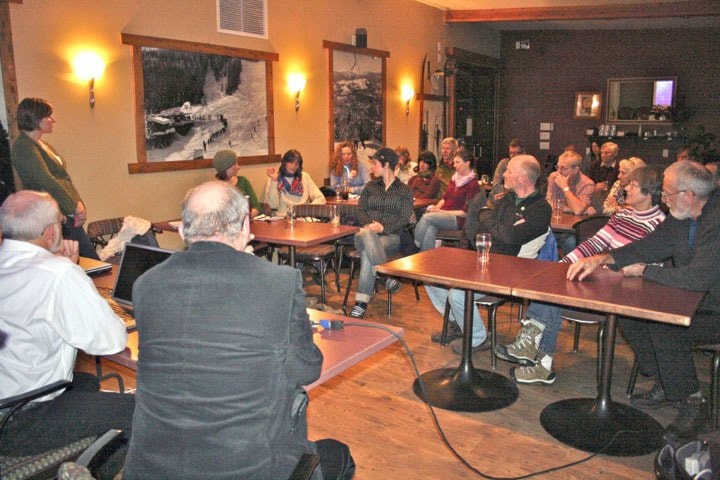Regarding George Penfold’s very pertinent points, I think we have to acknowledge that at some point in the relatively near future, services to our aging population won’t be the same as our parents experienced. Nor will services to the population as a whole be the same as they are now.
A smaller number of young people, in a more unstable environment, simply won’t be able to provide the same kind of services we all enjoy now.
Jack Alpert’s model is just that — a model, based on assumptions. Who knows if his number is right.
I think Aaron Cosbey’s view of the ‘fall’ is most likely — a series of drops, with no way to know how long it will take or how far it will go. The I=PAT concept (Impact equals a combination of Population, Affluence, and Technology) seems to cover it, especially if “Impact” includes consideration of feedback loops between humans and other species, climate change, and so on. To my mind, biological and ecological interdependencies are important factors.
The combination of climate events, disease, economic collapses, famines and resultant wars and mass migrations will certainly lead to population declines and die-offs in various areas of the world. These will stress associated social systems, knowledge and communication systems, and distribution networks and governments. We’ll see instabilities arise.
The principals of conservation biology and extinction modelling can be applied to human populations — there is an extensive literature already out there, as applied to other animal and plant species.
The eventual size of the remaining human population will certainly be much lower than it is now. The eventual size of the human population will, I think, be influenced by the distribution of peoples over geographical areas and the affect of damage to ecosystems and our current human systems on people’s ability to survive.
Whether advanced technological systems can ‘survive’ intact through these instabilities is a pertinent question.
For instance, in the Prairies they might want to increase use of wind power, but ultimately may not have access to the manufacturing capability for producing those large metal structures, or the transportation system to move the windmills to the desired sites, or even to the people & knowledge available to run the windmills and the electrical grid.
To bring this soapbox discussion back to sustainability in Rossland and the West Kootenay, I think we have to do what people all over are starting to do, and that is look to our own local survival by means of local organic food production, storage, processing and trade, local sourcing for housing, re-skilling of our local populations to live without ‘outside’ goods, services and fossil fuels and so forth.
I don’t see much leadership coming from higher levels of government. Local governments will have to step up to the plate or change their format and mandate. The ‘transition town’ model, for example, aims to ease the descent and provide for a softer landing. Nelson is starting on this path and we already have our own launching pad in the Sustainability Commission.
Having said all this bleak stuff, I actually think that, here in the Kootenays we are well situated to ride it out, at least in the short term.
Our climate is relatively mild, we’re not subject to rising ocean levels or earthquakes or hurricanes. We have water. We have wood to heat our homes if we need it. The hydro plants down on the river are an asset, if we can assure local access to the power generated there.
We have a peaceful social system. We have started the process of re-skilling and networking for local food production. We have some really smart and resourceful people. We have a strongly bonded community, near other strongly bonded communities.
I think the prospects of people continuing to live relatively well here are good.
Hanne Smith
Rossland city councillor
